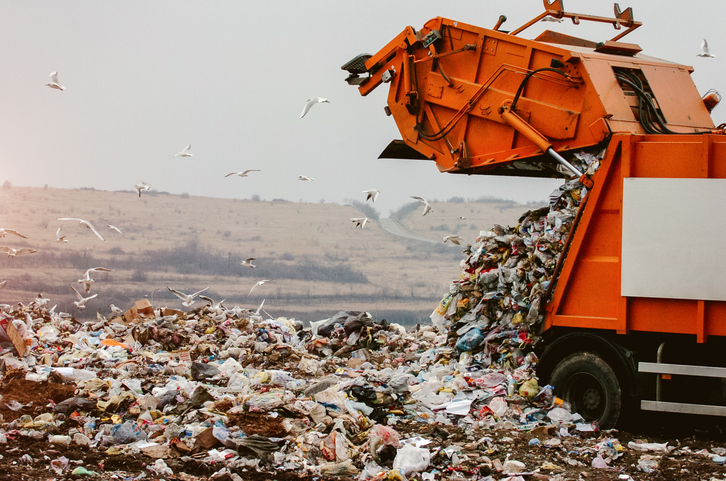
A Load of Rubbish
1 July 2018 is the cut-off date for local governments to introduce local laws to replace the State government waste management laws that will expire on that date.1
Time is running out for local governments to meet all of the obligations of the local law making process prior to the cut-off date.2
The state government waste management laws that are to expire form the basis for local governments to control waste collection within their local government areas in “waste collection areas”.3
Without that control domestic and commercial curbside waste collection services could be undertaken at the behest of each individual owner or occupier of premises without regard to Council.
It is likely that local governments that have entered into contracts with waste collectors for the collection of domestic and commercial curbside waste relied upon the Council’s ability to regulate the collection of waste.
For these reasons it is imperative that local governments ensure they do not miss the 1 July 2018 cut-off date for the commencement of their own local laws.
The basic building block for the application of the local laws is the replacement of section 7 which provides:
A local government may-
- by resolution, designate areas within its local government area in which the local government may conduct general waste or green waste collection; and
- decide the frequency of general waste or green waste collection in the designated areas.4
It is, therefore, essential that the local government designate the areas it intends to service.
In the process of drafting the local laws for one of our local government clients we reviewed several other local governments’ laws and noted a range of approaches to the identification of “waste collection areas”.5
Differences in the approaches to that provision include:
Example 1:
“waste collection area has the meaning given in Council’s annual resolution of rates and charges.” 6
Example 2:
“25B Designation of waste collection areas
The local government may, including for the purposes of determining the premises within its local government area that will be subject to levies (in the form of utility charges) for waste collection services-
- by resolution, designate areas (each a waste collection area) within its local government area in which the local government may conduct general waste or green waste collection; and
- decide the frequency of general waste or green waste collection in a waste collection area.” 7
Example 3:
“5 Designation of areas
The local government may-
- designate areas within its local government area in which the local government may conduct general waste or green waste collection; and
- the frequency of general waste or green waste collection in the designated area.” 8
The approach of Brisbane City Council is to define a “waste collection area”. That approach seeks to have the waste collection area determined annually with the resolution of rates and charges requiring the Council to ensure that a meaning is given in its annual resolution of rates and charges, every year. Any failing in that step may lead to there being no controlled area. 9
The approach of the Sunshine Coast Regional Council was to include a requirement that the designation be by way of “resolution”. By contrast each of the Council of the City of Townsville and Council of the City of Gold Coast simply provide for designation without specifying how that was to occur. Of these two approaches we do prefer the approach of the Sunshine Coast Regional Council because of its formality and clarity about how the designation can occur.
For one of our Council clients which provides a service throughout its entire local government area, we have modified the approach taken by Brisbane City Council by defining waste collection area in the local laws as being the whole of the local government area.
We encourage all local governments that have not commenced the local law making process to do so as soon as possible to avoid missing the cut-off date.
Because of the potential for aspects of the local law to be anti-competitive, the local law making process should include a public interest review consultation paper allowing members of the public to provide feedback about the potential anti-competitive provisions.10
_______________________________________________
Published 8 January 2018.
Footnotes:
1. Chapter 5A of the Environmental Protection Regulation 2008 and section 7 in Part 2A of the Waste Reduction and Recycling Regulation 2011
2. Section 29(2) of the Local Government Act 2009 and under the Council Local Law Making Process
3. Section 7 of the Waste Reduction and Recycling Regulation 2011
4. ibid
5. Council of the City of Gold Coast; Council of the City of Townsville; Brisbane City Council and Sunshine Coast Regional Council
6. Brisbane City Council, Health, Safety and Amenity Local Law 2009, Schedule 1 in force at 21/11/2014
7. Sunshine Coast Regional Council Amendment Local Law No 1 (Community Health and Environmental Management) 2017
8. Council of the City of Townsville Local Law No. 7 (Waste Management) 2017 and Council of the City of Gold Coast Local Law 20 (Waste Management) 2017
9. By analogy see Linville Holdings P/L v Fraser Coast Regional Council [2017] QSC 252
10. Section 38 of the Local Government Act 2009